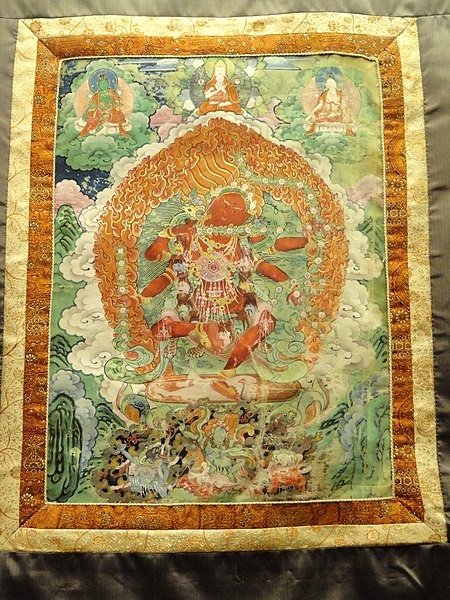Kurukullā is a female, peaceful to semi-wrathful Yidam in Tibetan Buddhism particularly associated with rites of magnetization or enchantment. Her Sanskrit name is of unclear origin. She is related to Shri Yantra in Hinduism, occupying the centre of the mystic diagram with varahi, together with whom the fifteen signs of moon phases were born from. She is identified with Tripura Sundari and Tara in some sources of Hinduism.
Kurukullā
Kurukulla sculpture from Calcutta Art gallery, 1913
In Buddhism, Buddha, "awakened one", is a title for those who are spiritually awake or enlightened, and have thus attained the supreme religious goal of Buddhism, variously described as nirvana, awakening (bodhi) and liberation (vimutti). A Buddha is also someone who has fully understood the Dharma, the true nature of things or the universal law. Buddhahood is the condition and state of a buddha. This highest spiritual state of being is also termed sammā-sambodhi. This state is interpreted in many different ways in the various schools of Buddhism.
Buddha Shakyamuni, in Greco-Buddhist style, c. 1st–2nd century CE, Gandhara
A painting of the primordial Buddha, Vajradhara, a figure of the Indo-Tibetan Buddhist tradition
Seated Shakyamuni Buddha, Seokguram cave, Korea.
Shakyamuni Buddha demonstrating control over the fire and water elements. Gandhara, 3rd century CE.






